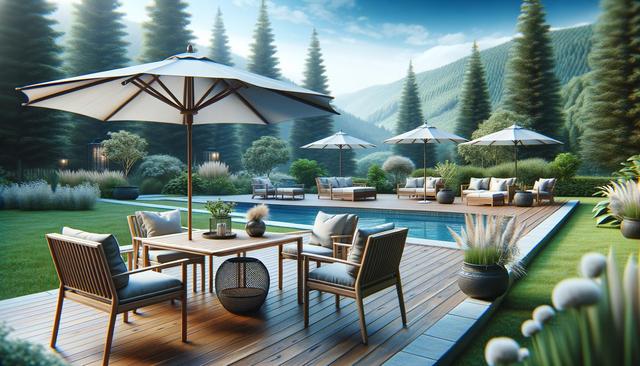Creating Comfort and Style: A Guide to Patio Furniture
Patio furniture can transform any outdoor space into a comfortable and inviting area for relaxation or entertaining.

Understanding the Purpose of Patio Furniture
Before choosing patio furniture, it’s important to consider the specific purpose of your outdoor space. Whether it’s for dining, lounging, reading, or hosting gatherings, the type of furniture you select will depend on how you plan to use the area. For example, a dining table set with chairs is ideal for meals outside, while a sectional sofa with cushions is more appropriate for lounging or entertaining guests.
Think about the size and layout of your patio. Smaller spaces may benefit from multi-functional or foldable furniture, while larger areas can accommodate more elaborate setups. Also, consider how much time you will spend outdoors and at what times of the day. These factors can influence your choice in materials, colors, and features like shade umbrellas or fire pits.
Common functional uses for patio furniture include:
- Outdoor dining with family or friends
- Relaxing with a book or enjoying morning coffee
- Hosting parties or celebrations
- Creating a quiet retreat for solitude
Materials and Durability Considerations
One of the most critical elements of patio furniture is its ability to withstand outdoor conditions. Materials vary widely in durability, maintenance needs, and appearance. Popular choices include metal, wood, plastic, and wicker. Each has its strengths and trade-offs depending on the climate and usage patterns.
For example, aluminum is lightweight, rust-resistant, and generally low-maintenance, making it suitable for humid or rainy environments. Teak wood offers a natural look and is known for its resistance to moisture and pests, though it does require occasional treatment to maintain its appearance. Synthetic resin wicker is another well-regarded option for its weather resistance and ease of cleaning.
When evaluating materials, consider these key factors:
- Resistance to moisture, rust, and UV rays
- Required maintenance and upkeep
- Weight and ease of moving furniture
- Environmental impact and sustainability
Design and Aesthetic Appeal
In addition to functionality, patio furniture should reflect your personal style and complement the overall look of your home and garden. Design trends range from rustic and traditional to modern and minimalist. Color schemes, cushion patterns, and decorative accessories all contribute to the visual harmony of your outdoor area.
Mixing different materials, like combining metal frames with wooden tabletops or adding textiles such as throws and pillows, can create a layered and inviting atmosphere. Neutral tones are versatile and timeless, while bold colors can add vibrancy and character.
Tips for enhancing your patio’s aesthetic:
- Coordinate furniture with outdoor surroundings
- Use planters, rugs, and lighting to add depth
- Choose cushions with durable, fade-resistant fabrics
- Incorporate unique pieces such as hanging chairs or hammocks
Comfort and Practical Features
Comfort is a major factor in selecting patio furniture, especially for seating options. Cushions should be thick, supportive, and made from weather-resistant materials. Adjustable seating, reclining chairs, and footrests can improve the user experience and make the space more versatile.
Moreover, practical aspects such as storage, stackability, and ease of cleaning play an essential role in maintaining the area. Furniture covers, storage boxes, and collapsible components can help protect your investment and extend the lifespan of each piece.
Consider including these features for added functionality:
- Built-in storage compartments
- Removable, washable cushion covers
- Umbrella holes or mounts for shade
- Non-slip feet to protect flooring
Maintenance and Seasonal Care
Proper care can significantly prolong the life of patio furniture. Depending on the materials, maintenance could involve regular cleaning, applying protective coatings, or storing items during extreme weather. For instance, wood furniture may need sealing or oiling, while metal pieces might require rust inhibitors.
During colder months or prolonged periods of disuse, it’s advisable to store furniture in a covered area or use high-quality covers. Cleaning cushions and checking for wear and tear at the beginning and end of each season helps maintain both appearance and safety.
Maintenance checklist to consider:
- Clean surfaces regularly with mild soap and water
- Inspect for damage or rust and repair promptly
- Apply protective treatments as recommended
- Store or cover items during off-seasons